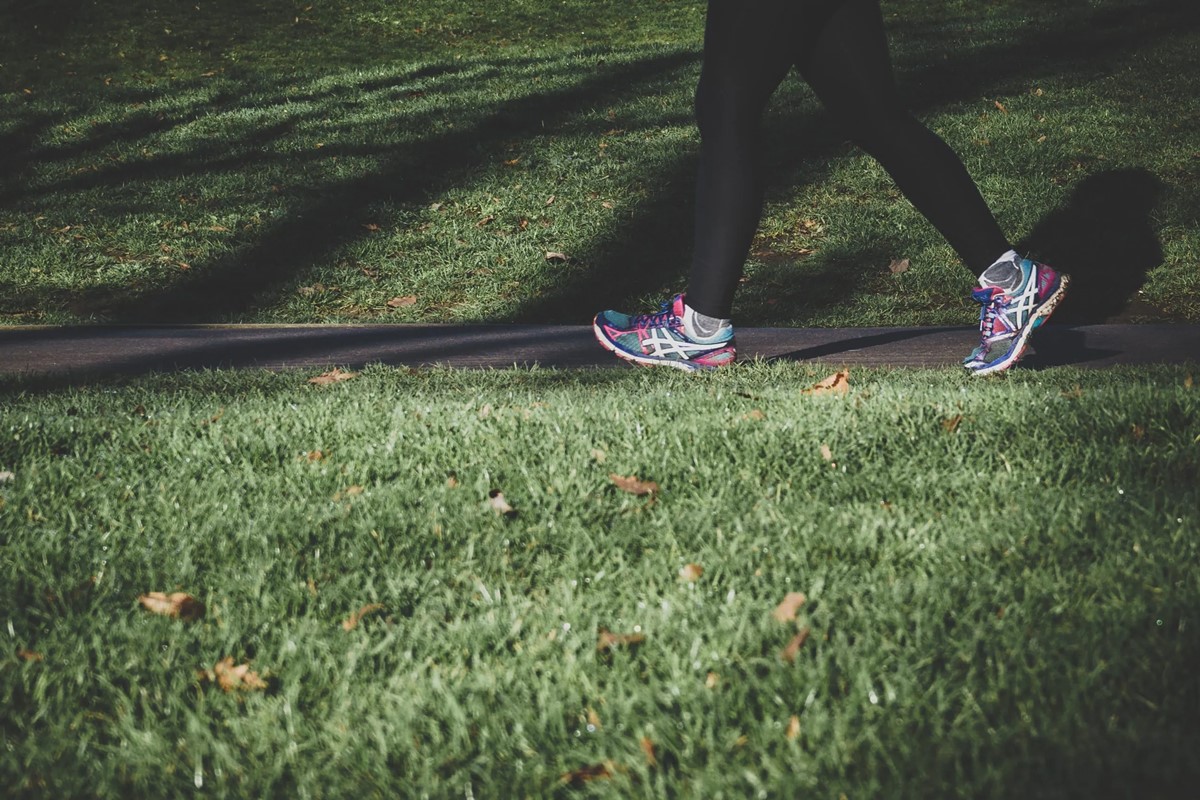

Featured
How Many Minutes Is 3 Miles Jogging
Modified: January 2, 2024
Discover how many minutes it takes to jog 3 miles. Get featured tips and insights on jogging, fitness, and staying active. Find out now!
Introduction
Jogging is a popular form of exercise that offers numerous physical and mental health benefits. Whether you’re a seasoned runner or just starting out, understanding how long it takes to jog a certain distance can help you set goals and track your progress. One common question that arises is, “How many minutes does it take to jog 3 miles?” In this article, we will explore the average jogging pace, factors that affect jogging time, and the benefits of incorporating this activity into your fitness routine.
When it comes to jogging, there isn’t a one-size-fits-all answer to how long it will take to complete a specific distance. The time it takes to jog 3 miles varies from person to person based on several factors, including fitness level, terrain, and individual running style. However, by understanding the average jogging pace and considering these factors, you can get a better idea of the estimated time it may take you to complete a 3-mile jog.
It’s important to note that jogging pace is typically measured in minutes per mile, or minutes per kilometer for non-US countries. The average jogging pace for most individuals falls between 8 and 12 minutes per mile. However, this can vary widely depending on factors such as age, gender, and overall fitness. Additionally, experienced runners and competitive athletes may have a faster pace, while beginners or individuals recovering from an injury may have a slower pace.
To calculate the time it takes to jog 3 miles, you can use the average jogging pace as a benchmark. For example, if your average pace is 10 minutes per mile, you can estimate that it would take you around 30 minutes to complete a 3-mile jog. Keep in mind that this is just an estimation, and your actual time may vary based on the factors mentioned earlier.
Factors that can affect jogging time include the terrain you’re running on, such as inclines or uneven surfaces. Uphill sections can slow down your pace, while downhill sections may allow you to pick up speed. Additionally, weather conditions like wind, temperature, and humidity can also impact your jogging performance.
Now that we’ve discussed the average jogging pace and factors that affect jogging time, let’s explore the numerous benefits of incorporating this exercise into your fitness routine.
Understanding the Average Jogging Pace
The average jogging pace is an essential aspect of estimating the time it takes to complete a specific distance. It is commonly measured in minutes per mile or minutes per kilometer, depending on the region. By understanding the factors that influence your jogging pace, you can set realistic goals and monitor your progress effectively.
As mentioned earlier, the average jogging pace generally falls between 8 and 12 minutes per mile. However, it’s important to note that this can vary significantly from person to person. Age, gender, fitness level, and running experience all play a role in determining your individual pace.
Age plays a significant role in determining jogging pace. Younger individuals often have more energy and better physical conditioning, allowing them to maintain a faster pace. On the other hand, older individuals may take longer to cover the same distance due to decreased muscle strength and endurance. It’s essential to be mindful of your age and adjust your expectations accordingly.
Gender can also affect jogging pace. It is generally observed that males tend to have a faster pace than females due to differences in muscle mass and cardiovascular endurance. However, it’s important to remember that these are general trends, and there are plenty of exceptions. Ultimately, individual fitness level and training play a more significant role than gender alone.
Furthermore, your current fitness level and running experience can impact your jogging pace. If you are just starting out or have taken a prolonged break from jogging, it may take some time to build up your endurance and speed. Beginners often have a slower pace as their bodies adjust to the demands of the activity. With consistent training, you can gradually improve your pace and reach your desired goals.
It’s worth noting that experienced runners and athletes tend to have a faster jogging pace than individuals who are new to running. Their bodies have adapted to the demands of running, allowing them to sustain higher speeds for longer durations. However, it’s important for everyone to listen to their bodies and avoid pushing beyond their limits to prevent injuries and burnout.
In summary, the average jogging pace varies from person to person and is influenced by factors such as age, gender, fitness level, and running experience. While there are general guidelines, it’s essential to personalize your expectations based on your individual circumstances. By understanding your average jogging pace, you can set achievable goals and track your progress effectively.
Calculating the Time for Jogging 3 Miles
Calculating the time it takes to jog 3 miles can be done by considering your average jogging pace and other factors that may influence your speed. This estimation can help you better plan your workouts and set realistic goals for yourself.
If you already know your average jogging pace in minutes per mile, you can simply multiply it by 3 to determine the estimated time it may take you to complete a 3-mile jog. For example, if your average pace is 10 minutes per mile, you can estimate that it would take you around 30 minutes to jog 3 miles.
However, if you don’t know your average pace, you can use a stopwatch or a running app to measure the time it takes you to complete a shorter distance, such as 1 mile. Then, you can use that time as a reference to estimate your 3-mile jogging time. For instance, if it takes you 9 minutes to jog 1 mile, you can estimate that it would take you around 27 minutes to complete 3 miles.
It’s important to note that these calculations are just estimations and your actual time may vary based on several factors. Variables like terrain, weather conditions, and your current fitness level can influence your pace. Uphill sections and uneven surfaces may slow you down, while downhill sections can allow for faster speeds. Additionally, factors such as wind, temperature, and humidity can affect your overall performance.
It’s always a good idea to track your time and progress as you continue your jogging routine. By doing so, you can identify improvements and areas where you may need to focus more on training. Additionally, monitoring your time can provide motivation and a sense of accomplishment as you observe your progress over time.
Remember, the time it takes to jog 3 miles is not set in stone and can vary from person to person. It’s crucial to listen to your body and work at a pace that is comfortable yet challenging for you. Gradually increasing your speed and endurance through consistent training can help you improve your time and achieve your fitness goals.
Factors that Affect Jogging Time
Several factors can influence your jogging time and the speed at which you complete a specific distance. Understanding these factors can help you better analyze your performance and make adjustments to improve your overall jogging time.
One of the most significant factors that affect jogging time is the terrain you’re running on. Running on uneven surfaces, such as trails or unpaved paths, can slow you down compared to running on flat and smooth pavement. Additionally, inclines and hills can require more effort and slow down your pace, while running downhill can allow you to pick up speed.
Weather conditions also play a role in jogging time. Running against strong headwinds can increase resistance and make it more challenging to maintain your pace. Extreme heat and humidity can negatively impact your endurance and overall performance. On the other hand, running in cooler and more favorable weather conditions can result in a faster pace and improved jogging time.
Your fitness level and running experience are crucial factors that affect your jogging time. Beginners or those who have taken a break from running may have a slower pace as their bodies adjust to the demands of the activity. With consistent training and improvement in fitness, you can gradually increase your speed and decrease your jogging time.
Another factor that can influence jogging time is your running form and technique. Efficient running form can help you maintain a steady pace and conserve energy. A balanced stride, proper arm movement, and a relaxed posture can contribute to overall speed and efficiency.
Furthermore, factors such as age, gender, and genetics can also impact your jogging time. Younger individuals often have more energy and better physical conditioning, which can result in faster jogging times. Males generally tend to have a faster pace compared to females due to differences in muscle mass and cardiovascular capacity. However, it’s important to note that individual variations exist, and with proper training and dedication, anyone can improve their jogging time.
Lastly, external factors such as distractions, motivation, and mental focus can influence your jogging time. Maintaining a positive mindset, setting goals, and staying motivated can help you push through challenging moments and maintain a consistent pace.
Understanding the factors that affect jogging time allows you to reflect on your performance and make necessary adjustments. By evaluating your terrain, weather conditions, fitness level, running form, and mental focus, you can work towards improving your jogging time and achieving your fitness goals.
Benefits of Jogging
Jogging is not just a popular form of exercise; it is also packed with numerous physical and mental health benefits. Incorporating jogging into your fitness routine can have a positive impact on various aspects of your well-being.
One of the key benefits of jogging is its ability to improve cardiovascular health. Regular jogging helps strengthen the heart and enhance its efficiency in pumping blood throughout the body. This, in turn, can lower the risk of cardiovascular diseases such as heart attacks, strokes, and high blood pressure.
Weight management is another advantage of jogging. It is an effective way to burn calories and elevate metabolism, which can aid in losing excess body weight or maintaining a healthy weight. Jogging also helps in toning muscles, particularly in the lower body, including the legs, hips, and glutes.
Beyond the physical benefits, jogging has a positive impact on mental health. Engaging in regular aerobic exercise such as jogging releases endorphins, also known as “feel-good hormones,” which can reduce stress, anxiety, and symptoms of depression. Jogging can also improve sleep quality, boost mood, and increase self-esteem and confidence.
Jogging is a versatile form of exercise that can be done almost anywhere. Whether you prefer running outdoors in natural settings or on a treadmill at the gym, it offers the convenience and flexibility to fit into any lifestyle. Additionally, jogging can be adapted to different fitness levels. Beginners can start with shorter distances and gradually increase their time and mileage as their fitness improves.
Another advantage of jogging is its social aspect. Joining running groups or participating in organized races can provide a sense of community, motivation, and support. Sharing the experience with others can make the activity more enjoyable and help you stay committed to your fitness goals.
Regular jogging also offers long-term benefits for overall health and longevity. It has been linked to a reduced risk of chronic diseases such as type 2 diabetes, certain types of cancer, and osteoporosis. Additionally, jogging can help improve cognitive function, memory, and brain health.
Overall, jogging is a fantastic exercise option that provides a plethora of benefits for both the body and mind. From cardiovascular health and weight management to stress reduction and improved mood, it offers a holistic approach to fitness and well-being. So lace up your running shoes, hit the pavement, and experience the numerous advantages that jogging has to offer.
Conclusion
In conclusion, understanding the time it takes to jog a certain distance, such as 3 miles, can help you set goals, track progress, and customize your fitness routine. The average jogging pace, which typically falls between 8 and 12 minutes per mile, serves as a benchmark for estimating your jogging time. However, it’s important to consider individual factors that can influence your pace, such as age, gender, fitness level, and running experience.
Calculating the time for jogging 3 miles can be done by multiplying your average pace by the distance. However, it’s vital to remember that this is an estimation and can vary based on factors like terrain, weather conditions, and personal fitness. Tracking your time and progress can provide valuable insights and motivation to improve.
Several factors can affect jogging time, including terrain, weather conditions, fitness level, running form, and mental focus. By understanding and addressing these factors, you can work towards improving your pace and overall performance.
Jogging offers a multitude of benefits for both physical and mental health. It improves cardiovascular health, aids in weight management, boosts mood, reduces stress and anxiety, and enhances overall well-being. Moreover, it is a versatile exercise that can be adapted to different fitness levels and can be enjoyed in various environments.
Incorporating jogging into your fitness routine not only provides physical health benefits but also offers a sense of community and support through running groups and races. Long-term benefits include a reduced risk of chronic diseases and improved cognitive function.
So, whether you’re a seasoned runner or just starting out, embracing jogging as part of your exercise regimen can lead to a healthier and happier lifestyle. Lace up your running shoes, hit the pavement, and experience the incredible benefits that jogging has to offer.









